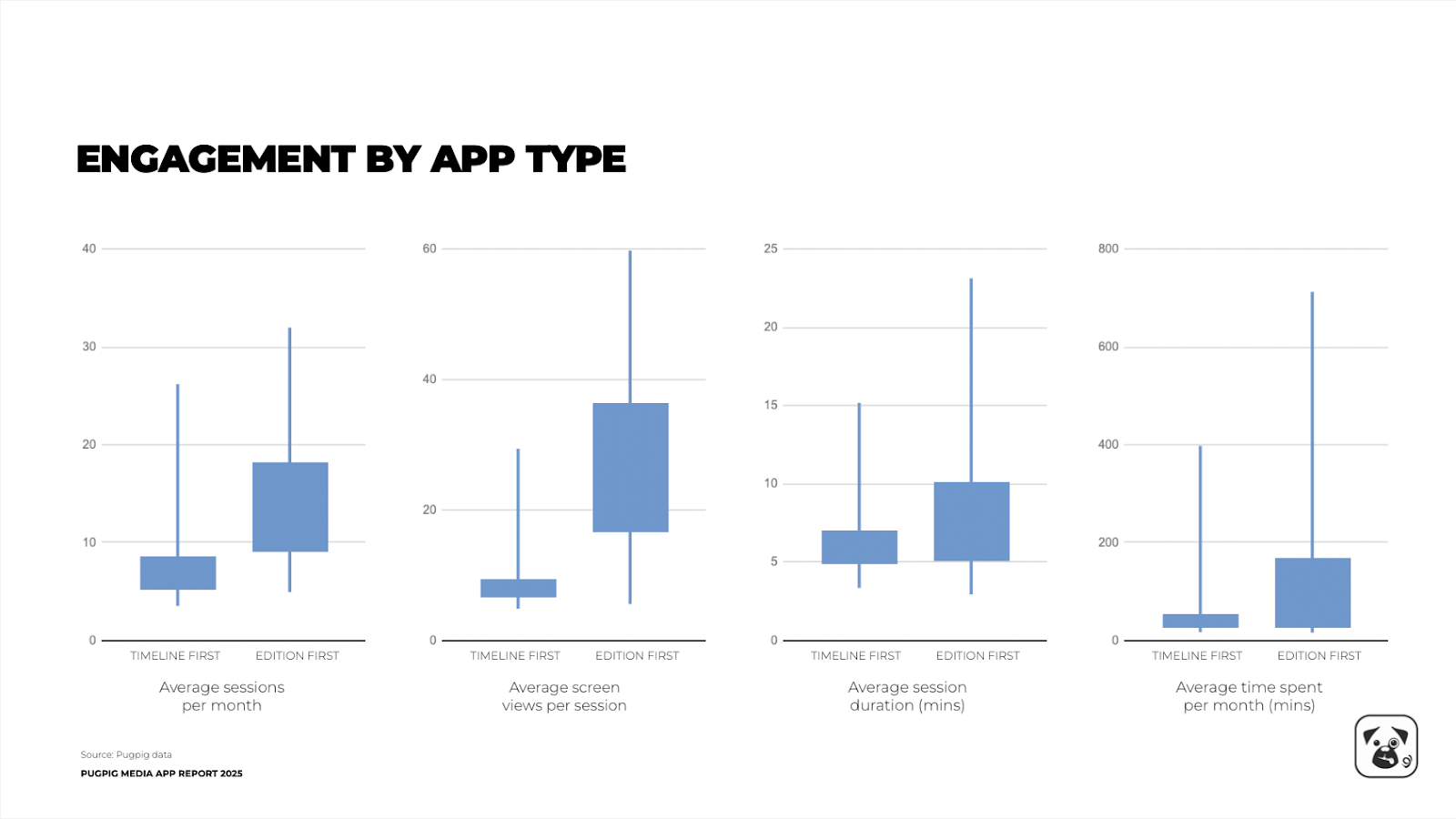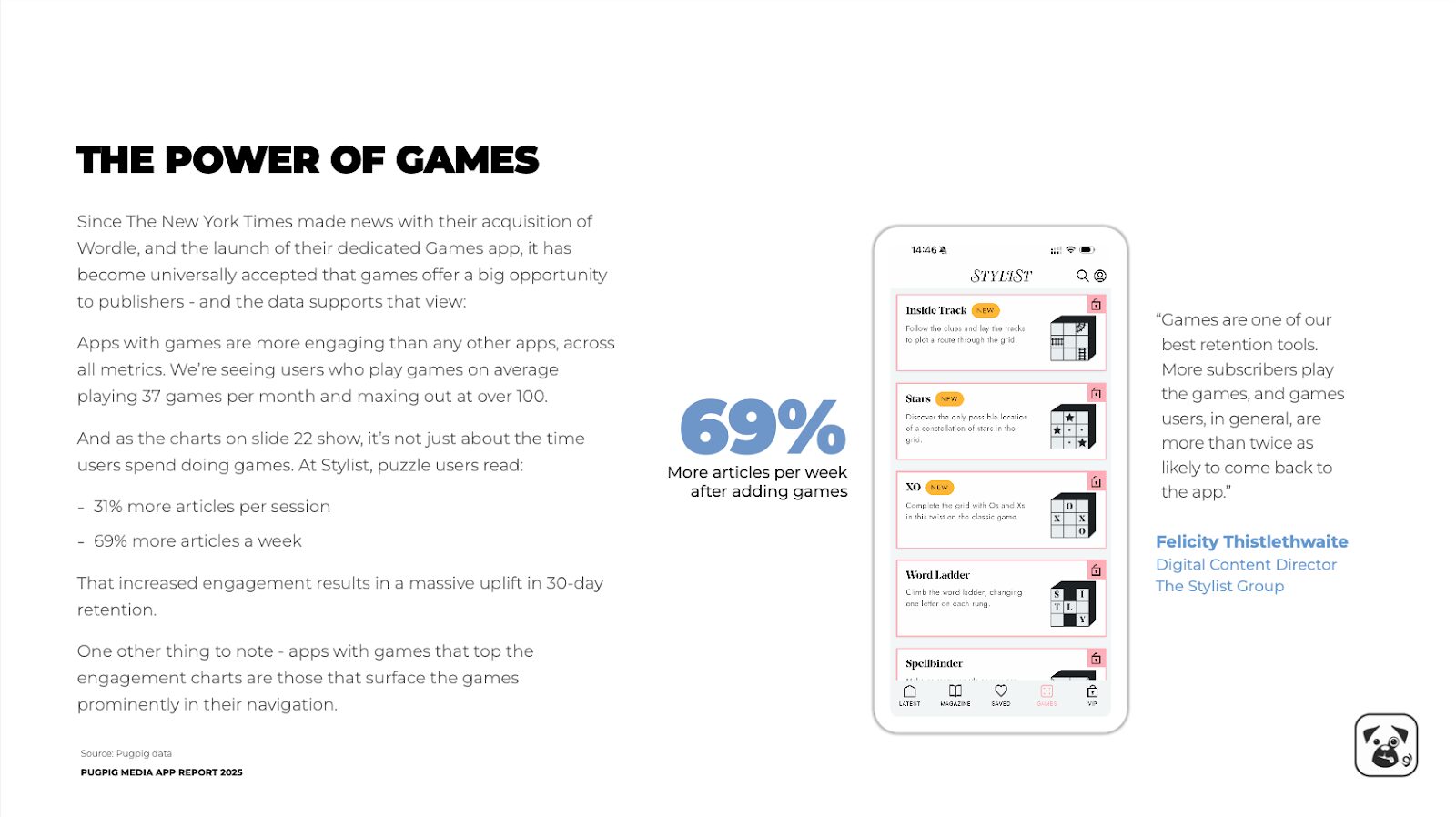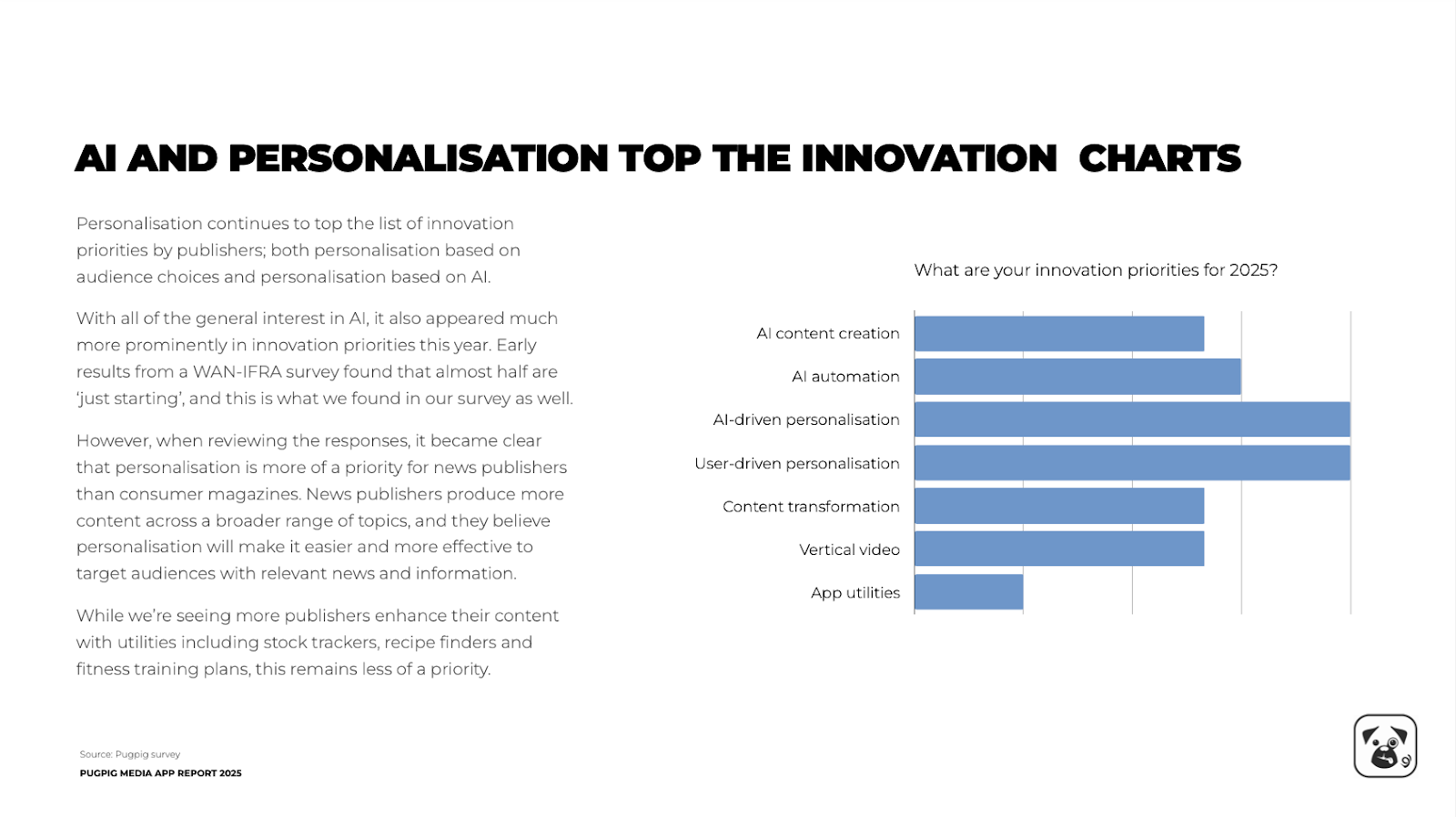

Social referrals are in free fall, and search is following close behind. Publishers are being pushed to rethink how they connect with their audiences – and apps are stepping up as one of the most important tools in the mix.
In this year’s Pugpig Media App Report, based on usage data and insights from 130 publishers and 400 apps, one message came through loud and clear: Media brands are leaning into apps because they deliver their most engaged audience.
The report shows just how widely user behaviour can vary. It includes a highly comprehensive set of industry benchmarks drawn from hundreds of live apps across news, consumer and business media. The benchmarks break down performance by vertical, publishing frequency, content format, device type and more.
You’ll find data on what proportion of subscribers typically use the app, how engagement metrics shift when features like audio, video and games are included, how engagement differs between edition-led and timeline-first apps, and the impact of user type, from anonymous browsers to subscribers.
Here are a handful of the biggest takeaways from the report, valuable for any media company getting to grips with their app strategy and wanting to build stronger, direct relationships with their audience.
Publishers are focusing on direct reader relationships…
Building direct relationships with audiences is becoming increasingly important – publishers are shifting their focus from chasing scale to targeting smaller but more loyal and valuable audiences, developing stronger relationships with readers free from the influence of third parties. With apps consistently delivering higher engagement than websites, they have become a critical component of audience development strategies.

… and engagement is the key to making the strategy work
It’s been well understood for some time now that an app that simply regurgitates content from the printed page will never reach its full potential. For an app to succeed with audiences beyond an aging group of print subscribers on iPads, you have to put the effort in to create something that truly exploits the capabilities of mobile devices and gives users the experience they expect from a modern media organisation.
Apps including richer content formats show significantly stronger engagement across all metrics – in fact, almost 50% of publisher apps now offer audio as standard. Features like video, games and utilities are playing an increasingly important role in driving deeper, more habitual use. And even though these features are sometimes used by a relatively small (but growing) proportion of users, those who do tend to return repeatedly and for long periods.
For instance, users who play games, on average play 37 games per month and max out at over 100. For one publisher included in the report, puzzle users read 31% more articles per session and 69% more articles a week.

There’s untapped potential here for all publishers, either in adding these features to your apps and/or making them more visible to users.
There’s growing enthusiasm for user-curated and AI-personalised reading experiences

Personalisation is the top innovation priority for 2025, with particular focus on tailoring home screens, content recommendations and push notifications. Still, only half of publishers have implemented any form of it. Many are testing AI-driven recommendations, personalised home screens, and segmented push – but others are taking a user-curated approach.
One publisher said: “Personalisation at scale often feels hollow. We prefer to give readers helpful tools for discovery so they can find what interests them on their own terms.”
That quote reflects a common tension. News publishers, in particular, are excited about AI’s ability to filter large volumes of content, but they also recognise the value of editorial curation and user-driven control.
We believe that the most successful apps will combine both, providing a balanced, compelling experience.
The new way of selling subscriptions in the US is worth exploring, but must be evaluated carefully
In recent months, the US court has ruled that Apple can no longer stop developers from directing users to pay outside the App Store. The ruling states Apple can no longer interfere with or take a commission from external purchases made by US users.
There’s now much more flexibility in how publisher apps offer subscriptions in US apps and this means publishers can send American users to external sites to subscribe, avoiding Apple’s cut and allowing them to own the subscriber relationship directly. It also means that these flows are considerably smoother than they have been in the past.
However, there are tradeoffs. External flows introduce friction – users effectively have to make a purchase through mobile web pages, which are less smooth than in-app purchases which still offer seamless access, promos and pricing options.
—
You can download the full report here.












